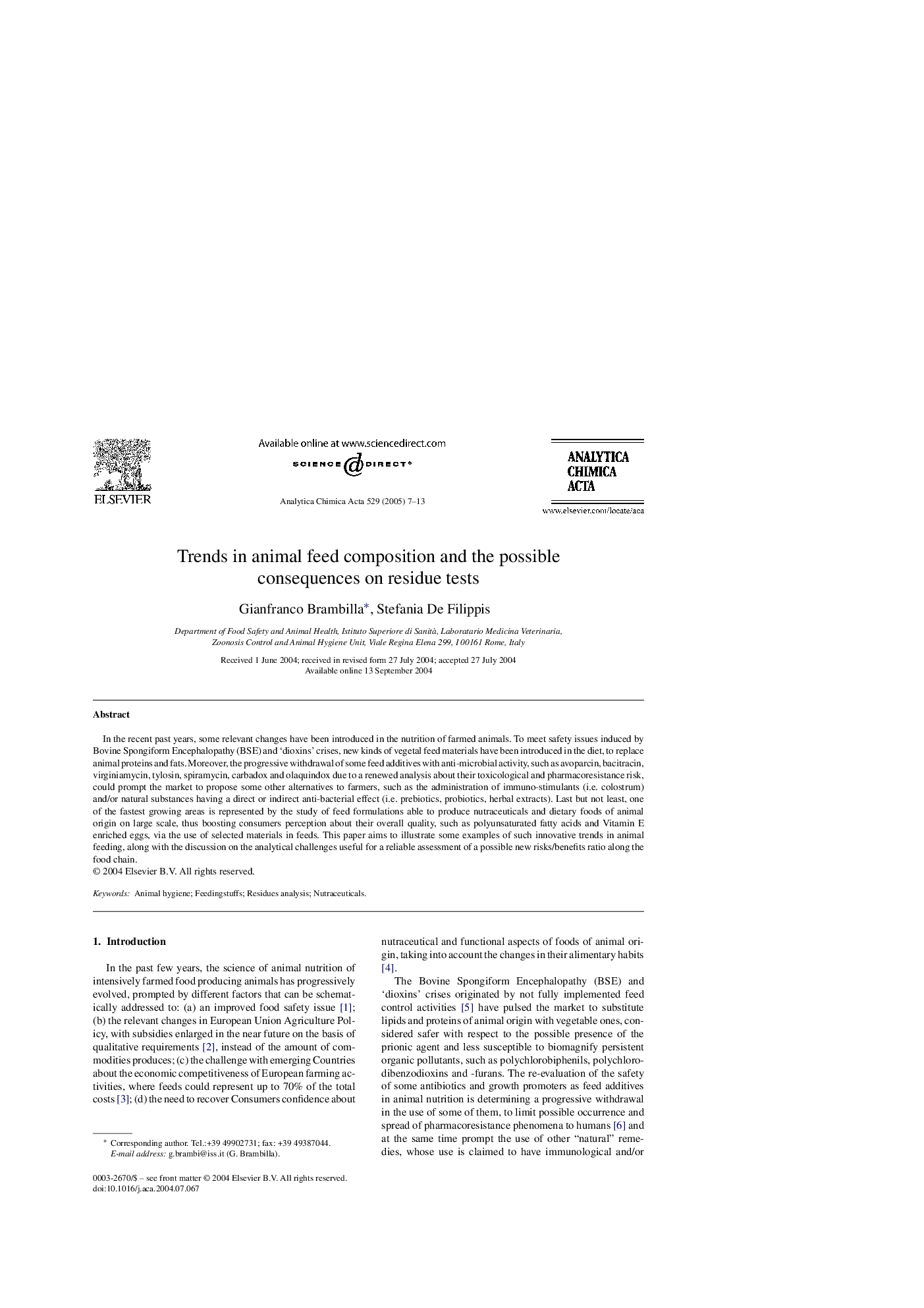| Article ID | Journal | Published Year | Pages | File Type |
|---|---|---|---|---|
| 9743930 | Analytica Chimica Acta | 2005 | 7 Pages |
Abstract
In the recent past years, some relevant changes have been introduced in the nutrition of farmed animals. To meet safety issues induced by Bovine Spongiform Encephalopathy (BSE) and 'dioxins' crises, new kinds of vegetal feed materials have been introduced in the diet, to replace animal proteins and fats. Moreover, the progressive withdrawal of some feed additives with anti-microbial activity, such as avoparcin, bacitracin, virginiamycin, tylosin, spiramycin, carbadox and olaquindox due to a renewed analysis about their toxicological and pharmacoresistance risk, could prompt the market to propose some other alternatives to farmers, such as the administration of immuno-stimulants (i.e. colostrum) and/or natural substances having a direct or indirect anti-bacterial effect (i.e. prebiotics, probiotics, herbal extracts). Last but not least, one of the fastest growing areas is represented by the study of feed formulations able to produce nutraceuticals and dietary foods of animal origin on large scale, thus boosting consumers perception about their overall quality, such as polyunsaturated fatty acids and Vitamin E enriched eggs, via the use of selected materials in feeds. This paper aims to illustrate some examples of such innovative trends in animal feeding, along with the discussion on the analytical challenges useful for a reliable assessment of a possible new risks/benefits ratio along the food chain.
Keywords
Related Topics
Physical Sciences and Engineering
Chemistry
Analytical Chemistry
Authors
Gianfranco Brambilla, Stefania De Filippis,
